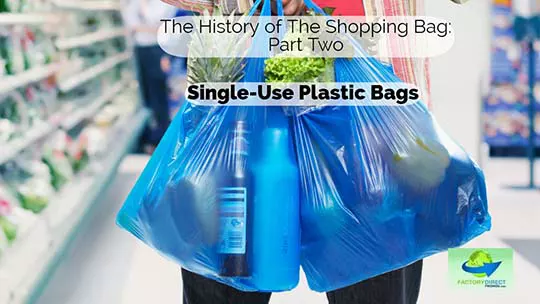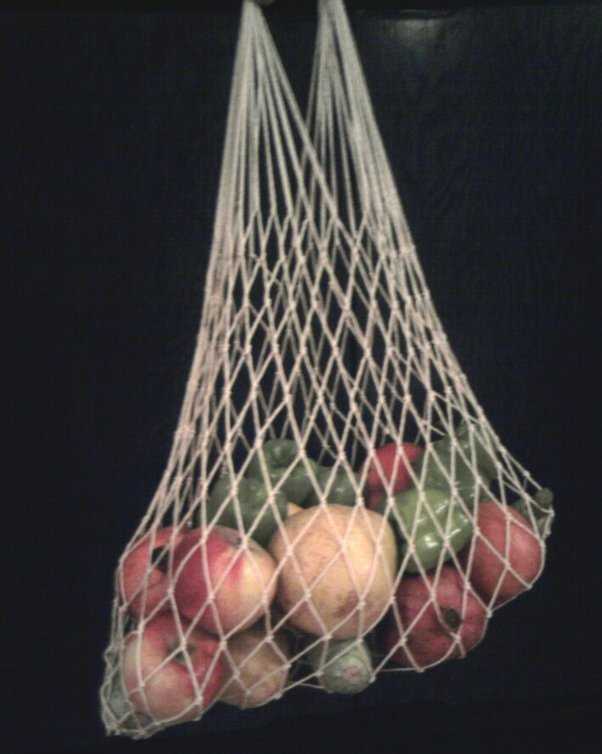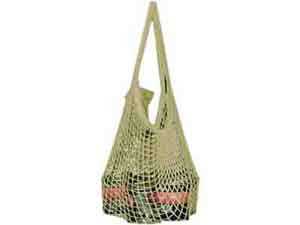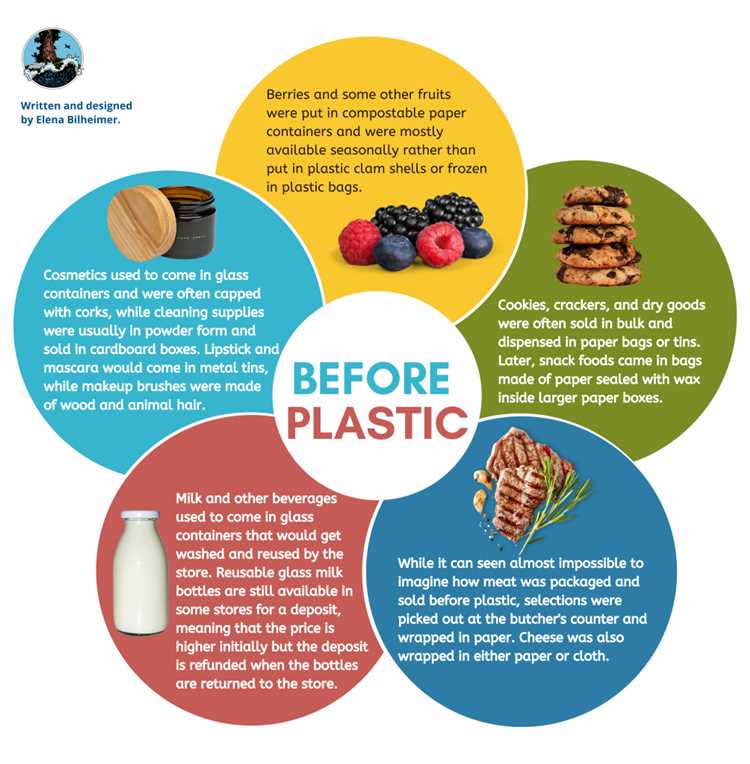
In today’s world, plastic bags have become a ubiquitous presence in our daily lives. We use them to carry groceries, pack lunches, and even store clothing. However, the widespread use of plastic bags has raised significant environmental concerns. They take hundreds of years to decompose, contribute to pollution, and pose a threat to wildlife. As a result, there has been a growing movement towards finding alternatives to plastic bags that are more sustainable and eco-friendly.
Believe it or not, people did not always rely on plastic bags to carry their belongings. Before the invention of plastic, individuals used a variety of materials to transport goods. One of the earliest alternatives was cloth bags, which have been used for centuries. These bags were often made from natural fibers such as cotton or linen and could be reused multiple times. They were durable, easy to clean, and did not harm the environment.
Another popular alternative to plastic bags was the use of baskets. Baskets have a long history and can be traced back to ancient civilizations. They were typically made from materials like wood, bamboo, or even metal wire. Baskets were not only practical for carrying items, but they also had cultural significance in many societies. They were often decorated and used for ceremonial purposes, showcasing the craftsmanship of the artisan who made them.
In addition to cloth bags and baskets, people also used paper bags as an alternative to plastic. Although not as durable as cloth or baskets, paper bags were lightweight, inexpensive, and biodegradable. They were often made from recycled paper and could be reused or recycled themselves. Paper bags were a common sight in grocery stores and markets before the rise of plastic bags.
As the negative impact of plastic bags on the environment continues to be recognized, individuals and businesses are exploring new alternatives. From reusable canvas bags to biodegradable options made from plant-based materials, there are now numerous choices available. By adopting these alternatives, we can reduce our reliance on plastic bags and make a positive impact on the planet.
- History of Bags: From the Origins to Plastic
- Traditional Materials: Nature as a Source
- Creative Solutions: Alternatives Throughout the Centuries
- The Rise of Plastic: Convenience or Curse?
- Conclusion
- Environmental Impact: The Dark Side of Plastic Bags
- 1. Non-Biodegradable Nature:
- 2. Pollution and Littering:
- 3. Ecosystem Disruption:
- 4. Energy Consumption and Greenhouse Gas Emissions:
- 5. Waste Management Challenges:
- Sustainable Solutions: Finding Alternatives Today
- Frequently Asked Questions:
- What materials were used to make bags before plastic?
- Were cloth bags popular before plastic bags?
- What are some advantages of using cloth bags over plastic bags?
- Did people use paper bags before plastic bags?
- What are some modern alternatives to plastic bags?
- What alternatives to plastic bags were used before?
History of Bags: From the Origins to Plastic
The use of bags dates back thousands of years, starting with the earliest civilizations. In ancient times, people relied on various materials to create bags for carrying and storing items. These early bags were typically made from materials such as animal hides, woven plant fibers, and even shells.
During the Middle Ages, the production of bags became more sophisticated, with the use of leather and other sturdy materials. Bags were primarily used for carrying coins, personal belongings, and tools. They were often worn on belts or carried by hand.
In the 19th century, the Industrial Revolution brought about significant changes in bag production. With the advent of textile manufacturing, bags made from cotton, linen, and jute became more readily available. These materials were durable and more affordable, making them popular choices for everyday use.
However, the real revolution in bag production came with the invention of plastic in the early 20th century. Plastic bags were first introduced in the 1950s and quickly gained popularity due to their convenience and affordability. They were lightweight, waterproof, and could be easily mass-produced.
Plastic bags revolutionized the way people carried their groceries, packed their belongings, and stored items. They became a common sight in supermarkets, retail stores, and households around the world. However, their widespread use also led to environmental concerns due to their non-biodegradable nature.
In recent years, there has been a push towards finding alternatives to plastic bags, such as reusable cloth bags, paper bags, and biodegradable options. The aim is to reduce plastic waste and promote more sustainable practices.
Looking back at the history of bags, it is clear that humans have always had a need for portable and convenient storage solutions. From the earliest bags made of animal hides and woven fibers to the rise of plastic bags, our choices have evolved alongside technological advancements and changing attitudes towards sustainability.
Traditional Materials: Nature as a Source
Before the invention of plastic bags, people relied on a variety of traditional materials sourced from nature to fulfill their packaging needs. These materials were not only environmentally friendly but also biodegradable, making them a sustainable option.
One of the most commonly used materials was natural fibres, such as cotton and jute. Cotton bags were widely popular, especially for carrying groceries and goods. Jute bags, made from the fibres of the jute plant, were also used due to their strength and durability.
Another natural material that was commonly used was paper. Paper bags were made from trees, which were a readily available resource. They were used in various industries, including retail and food, for packaging and carrying items.
In addition to fibres and paper, people also utilized animal products for packaging. For example, animal hides were often tanned and transformed into leather bags. These bags were not only sturdy but also had a rustic and timeless appeal.
Furthermore, plant leaves and bark were used to create bags in some cultures. In regions where palm trees were abundant, palm leaf bags were intricately woven and used for carrying goods. Similarly, tree bark was used by indigenous communities to fashion bags that were both functional and aesthetically pleasing.
Overall, traditional materials sourced from nature provided a sustainable and eco-friendly alternative to plastic bags. As concerns grow over the negative impact of plastic on the environment, exploring and adopting these traditional materials can help us pave the way for a greener future.
Creative Solutions: Alternatives Throughout the Centuries
Before the introduction of plastic bags, people had to find creative alternatives to carry their belongings. Over the centuries, various materials and methods have been used to provide containment and convenience. Here are a few notable examples:
Cloth Bags: Cloth bags have been used for centuries as a durable and reusable option for carrying items. Made from materials like canvas, linen, and cotton, these bags were commonly used by travelers, merchants, and shoppers. They offered the advantage of being able to carry heavy loads and were a popular choice for transporting groceries, clothes, and other goods.
Wicker Baskets: Wicker baskets are another alternative that has been used since ancient times. These baskets are made from woven plant fibers, such as willow or bamboo, and were lightweight yet sturdy. They were commonly used for carrying produce, grains, and other goods. Wicker baskets were also popular for picnics and outdoor excursions due to their rustic appeal.
Wooden Boxes: In the past, wooden boxes were widely used for transporting fruits, vegetables, and other perishable items. These boxes were made from various types of wood and were often lined with paper or cardboard to provide additional protection. Wooden boxes were sturdy and reusable, making them a practical choice for many businesses and households.
String Bags: String bags, also known as net bags, were commonly used before the advent of plastic. These bags were made from a mesh-like material, such as cotton or nylon, which allowed for breathability and flexibility. They could be easily folded up and stored when not in use. String bags were often used for carrying produce, bread, and other small items.
Paper Bags: Paper bags have a long history as an alternative to plastic. Initially made from parchment or recycled paper, these bags were commonly used in the 18th and 19th centuries. They provided a lightweight option for carrying goods and could be easily folded or torn when no longer needed. However, compared to other alternatives, paper bags were not as durable or reusable.
As we can see, creative solutions have been used throughout the centuries to replace plastic bags. From cloth bags to wicker baskets, these alternatives offer us a glimpse into the resourcefulness of previous generations. Looking back at these alternatives can inspire us to find innovative solutions for reducing plastic waste in the present day.
The Rise of Plastic: Convenience or Curse?
Plastic has become an integral part of our daily lives. From household items to packaging materials, it is hard to imagine a world without plastic. However, the rise of plastic has brought about a debate on whether it is a convenience or a curse.
Plastic was first invented in the early 20th century, and its popularity quickly spread due to its versatile nature and low cost of production. It offered convenience like never before, with its lightweight and durable qualities. Plastic bags, in particular, became widely used for their convenience in carrying groceries, goods, and other items.
But with convenience came consequences. The durability of plastic bags meant that they could take hundreds of years to decompose, leading to an alarming rise in landfill waste. Furthermore, the lightweight nature of plastic bags posed a threat to wildlife, as they were easily carried away by the wind and ended up in oceans and rivers, causing harm to marine life.
As the negative impact of plastic bags became more evident, people started to seek alternatives. Before the invention of plastic bags, individuals used various materials such as cloth, paper, and even baskets to carry their belongings. These alternatives were more biodegradable and posed less harm to the environment.
Efforts have been made to address the environmental concerns associated with plastic bags. Many countries and cities around the world have implemented plastic bag bans or levies, encouraging the use of reusable bags or other eco-friendly alternatives. Additionally, innovations in biodegradable and compostable plastics provide hope for a more sustainable future.
Conclusion

The rise of plastic has undoubtedly brought convenience to our lives, but it has also become a curse for the environment. The extensive use of plastic bags has resulted in a pollution crisis, threatening ecosystems and wildlife. However, awareness of these issues has led to a growing movement towards finding alternatives and reducing plastic waste. It is up to us as individuals and society to make conscious choices and adopt sustainable practices to protect the planet for future generations.
Environmental Impact: The Dark Side of Plastic Bags

Plastic bags have gained popularity due to their convenience and low cost, but the environmental impact of these bags is a growing concern. The production, use, and disposal of plastic bags can have significant negative effects on the environment and wildlife.
1. Non-Biodegradable Nature:
Plastic bags are made from petroleum, a non-renewable resource, and they do not biodegrade. Instead, they break down into smaller plastic particles, known as microplastics, that can persist in the environment for hundreds of years. These microplastics can contaminate water sources, soil, and even enter the food chain.
2. Pollution and Littering:

Plastic bags are lightweight and easily carried by wind and water. As a result, they often end up in rivers, streams, and oceans, causing pollution and posing a threat to marine life. Marine animals like sea turtles and seabirds can mistake plastic bags for food and suffer from ingestion or entanglement.
3. Ecosystem Disruption:
Plastic bags can disrupt ecosystems by clogging waterways and blocking the flow of water. This can lead to flooding and damage to habitats. In addition, plastic bags can smother plant life, preventing photosynthesis and impacting the overall health of an ecosystem.
4. Energy Consumption and Greenhouse Gas Emissions:
The production of plastic bags requires a significant amount of energy and contributes to greenhouse gas emissions. The extraction of fossil fuels, the refining process, and the manufacturing of plastic bags all contribute to carbon dioxide emissions, exacerbating climate change.
5. Waste Management Challenges:
Plastic bags are difficult to recycle due to their low recycling rate and the complexity of separating them from other waste. As a result, many plastic bags end up in landfills, where they take up valuable space and release harmful chemicals over time.
It is clear that plastic bags have a dark side when it comes to their environmental impact. Finding alternatives and reducing our reliance on plastic bags is key to mitigating these harmful effects and protecting our planet for future generations.
Sustainable Solutions: Finding Alternatives Today

As the world becomes more aware of the harmful effects of plastic pollution, finding sustainable alternatives to plastic bags has become a priority for many individuals and businesses. Fortunately, there are a variety of eco-friendly options that are being utilized today.
One popular alternative to plastic bags is reusable canvas or cloth bags. These bags are made from natural materials such as cotton or hemp, and can be used over and over again. They are durable, washable, and can carry heavier loads than plastic bags. Many people keep reusable bags in their car or purse so they are always on hand when needed.
Another option is using paper bags. While not as durable as canvas or cloth bags, paper bags are biodegradable and can be recycled. They are often used in grocery stores or other retail settings as an alternative to plastic bags. Some stores have even started offering discounts or rewards for bringing your own reusable bags or using paper bags instead.
For those looking for more innovative solutions, there are also bags made from plant-based materials. These bags are often made from materials like cornstarch or potato starch, which are biodegradable and compostable. While these bags may not be as widely available as other alternatives, they are gaining popularity as more people seek out sustainable options.
In addition to reusable bags, there are also alternatives to plastic produce bags. Many grocery stores now offer small mesh bags that can be used instead of plastic bags for fruits and vegetables. These bags are lightweight, breathable, and can be washed and reused. Some people also opt for using glass or stainless steel containers for storing produce, eliminating the need for any kind of bag.
| Alternative | Advantages | Disadvantages |
|---|---|---|
| Reusable Cloth Bags | Durable, washable, can carry heavier loads | Can be forgotten or left at home |
| Paper Bags | Biodegradable, recyclable | Not as durable, can tear if wet |
| Plant-based Bags | Biodegradable, compostable | May not be widely available |
| Mesh Bags | Lightweight, breathable, washable | Only suitable for produce |
Ultimately, finding sustainable alternatives to plastic bags requires a shift in mindset and habits. By opting for reusable bags and exploring different options, individuals can make a positive impact on the environment and help reduce the amount of plastic waste that ends up in landfills and oceans.
Frequently Asked Questions:
What materials were used to make bags before plastic?
Before plastic became widely available, people used various materials to make bags. These materials included cloth, paper, and natural materials like animal hides and plant leaves.
Were cloth bags popular before plastic bags?
Yes, cloth bags were quite popular before plastic bags. They were reusable and made from durable materials like cotton or canvas. Many people carried cloth bags to the market or used them for other shopping needs.
What are some advantages of using cloth bags over plastic bags?
Using cloth bags instead of plastic bags has several advantages. Cloth bags are reusable, which reduces waste and is environmentally friendly. They are also more durable and can carry heavier items. Additionally, cloth bags do not contribute to plastic pollution or harm wildlife.
Did people use paper bags before plastic bags?
Yes, people used paper bags before plastic bags became popular. Paper bags were commonly used in grocery stores and other shops. However, they were not as durable or reusable as cloth bags, and often tore or broke easily.
What are some modern alternatives to plastic bags?
There are several modern alternatives to plastic bags available today. These include reusable cloth bags, tote bags, mesh bags, and biodegradable bags made from materials like cornstarch or recycled paper. Some people also choose to carry their own containers or jars for shopping, reducing the need for bags altogether.
What alternatives to plastic bags were used before?
Before plastic bags became popular, people used a variety of alternatives. Some commonly used alternatives were paper bags, cloth bags, and baskets. These alternatives were more sustainable as they were reusable and biodegradable.